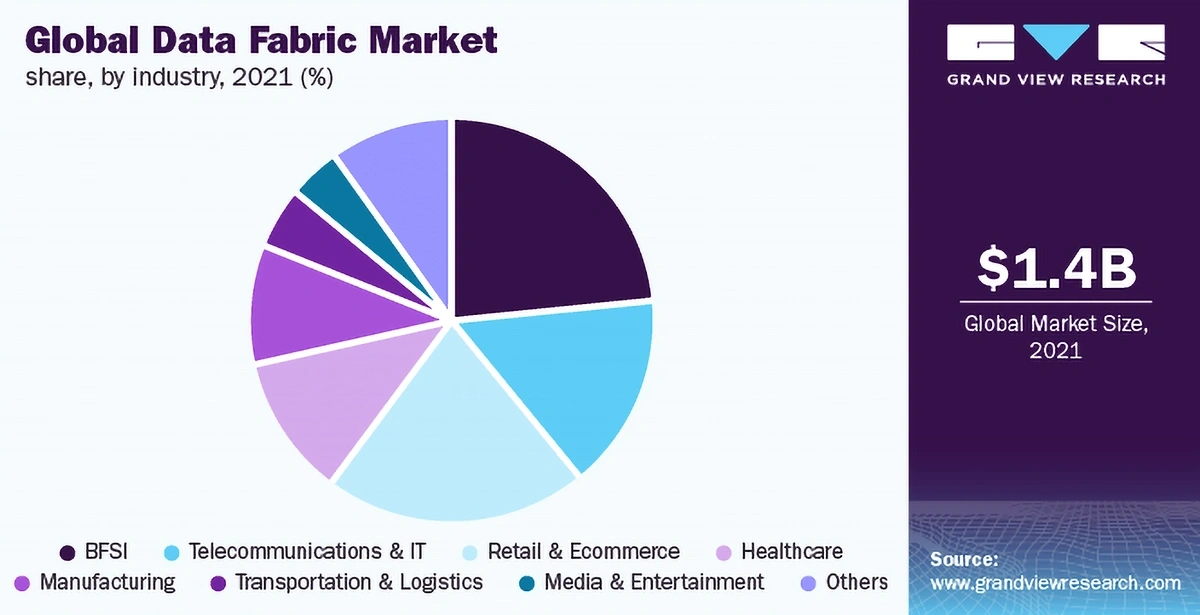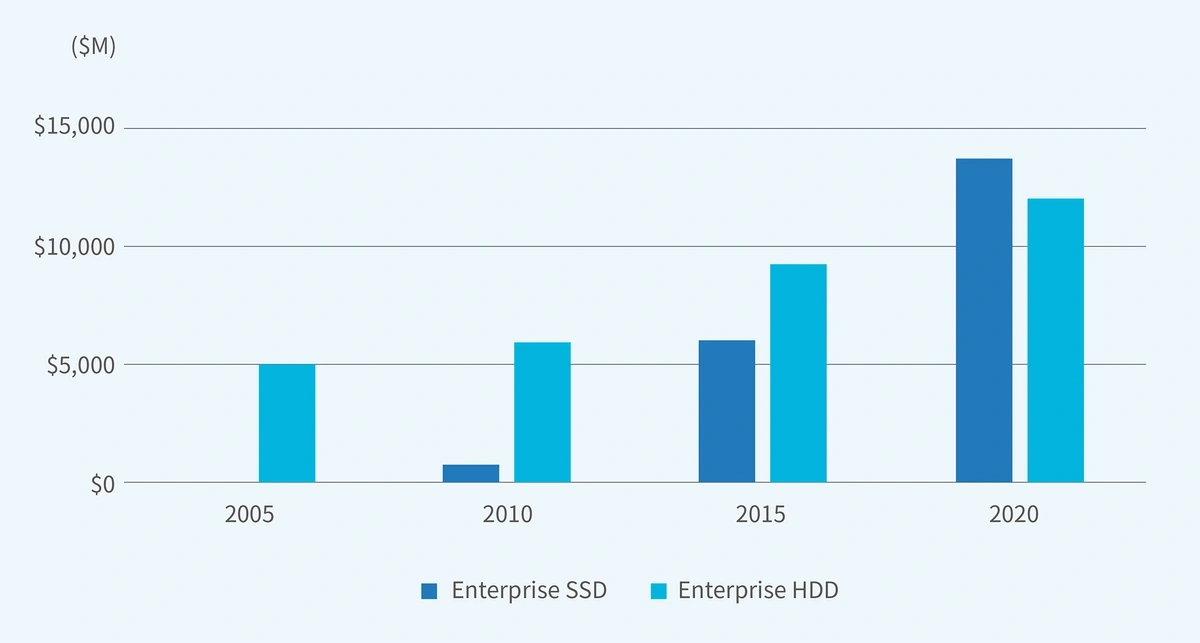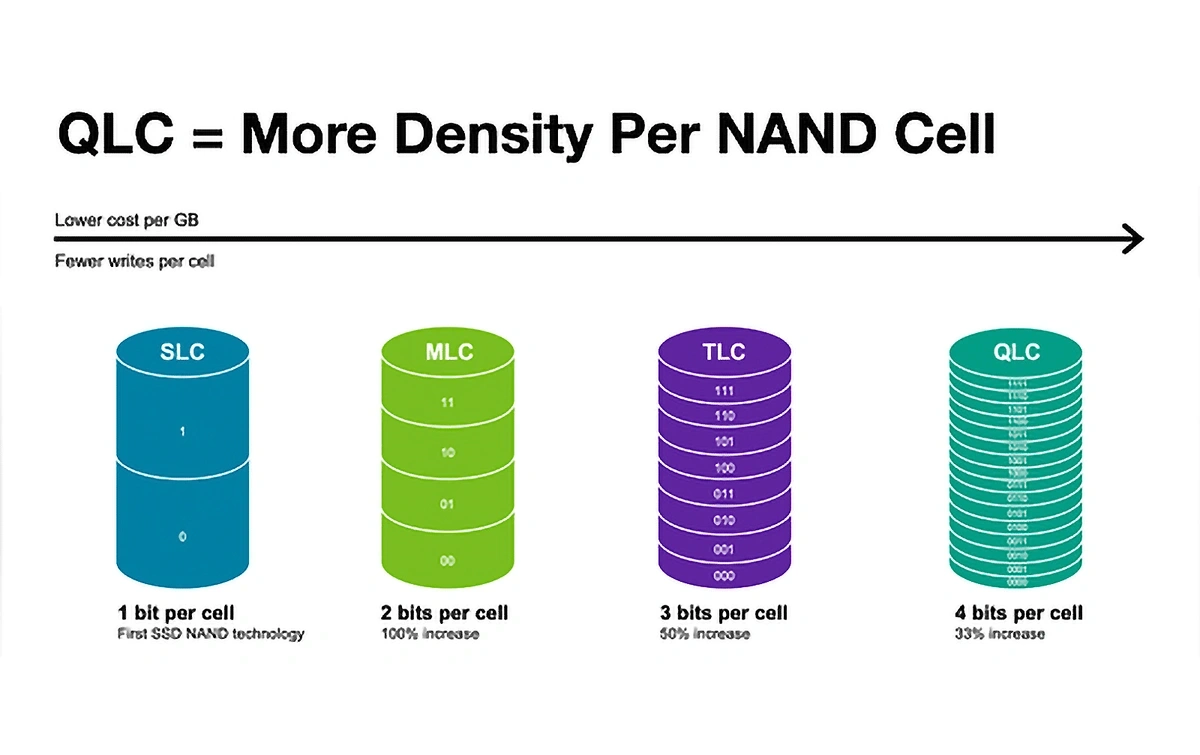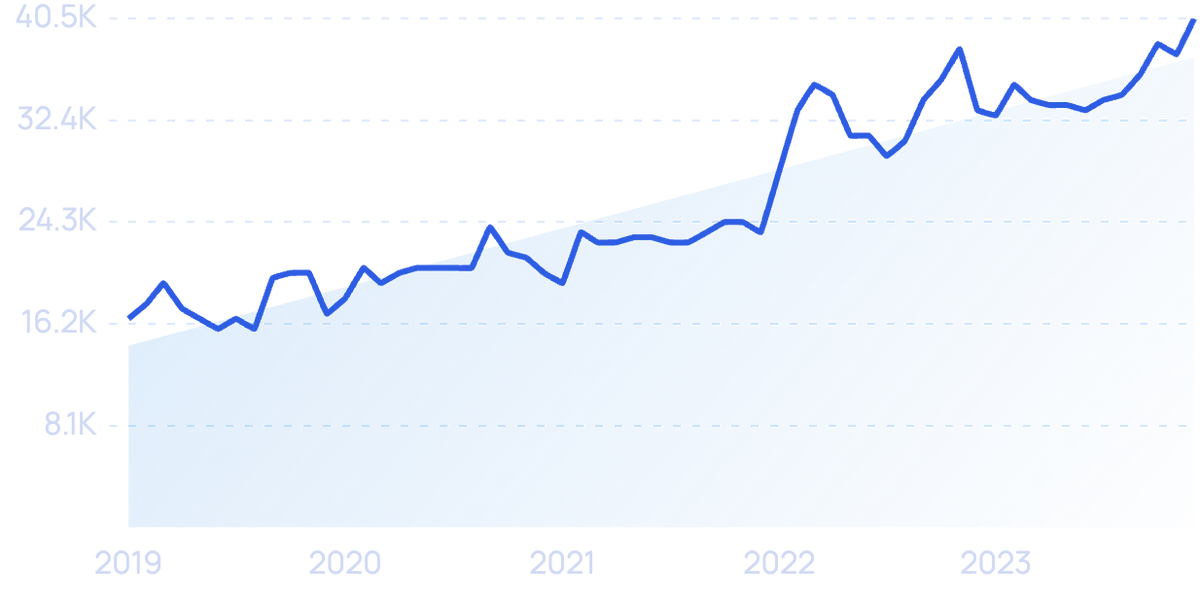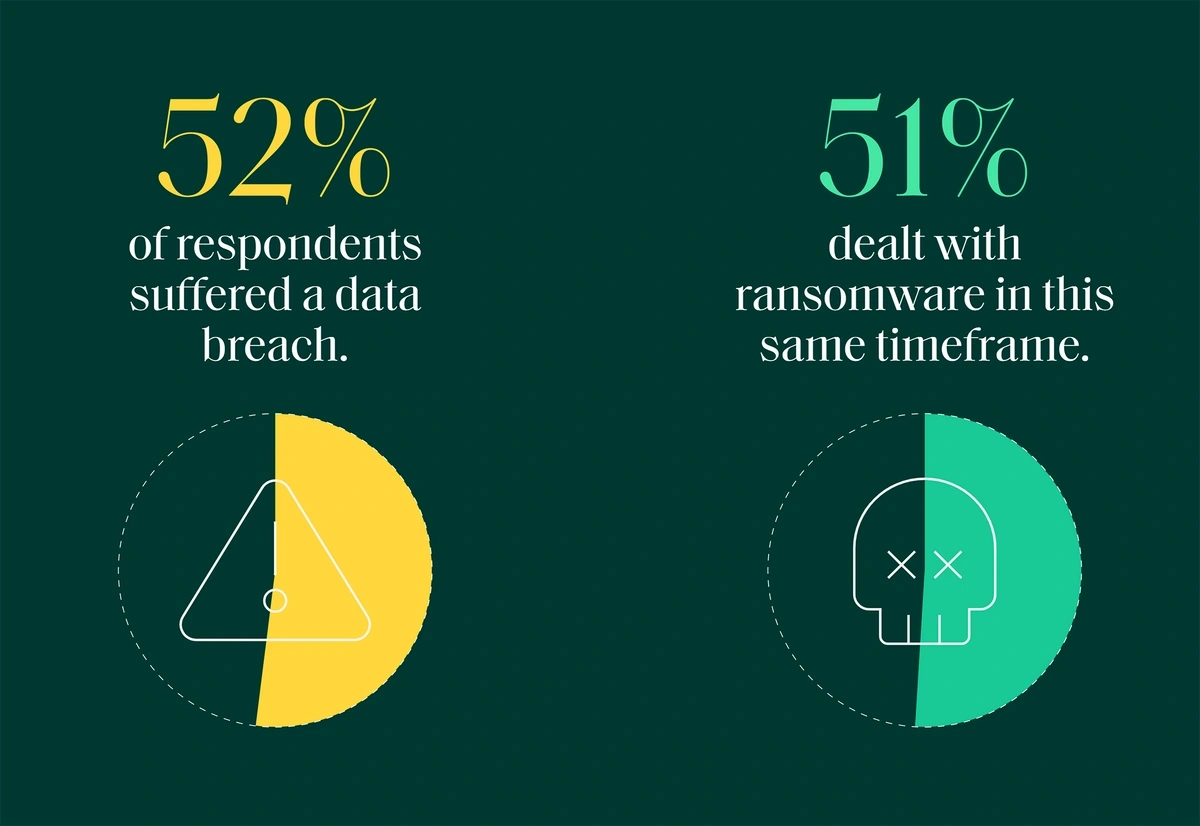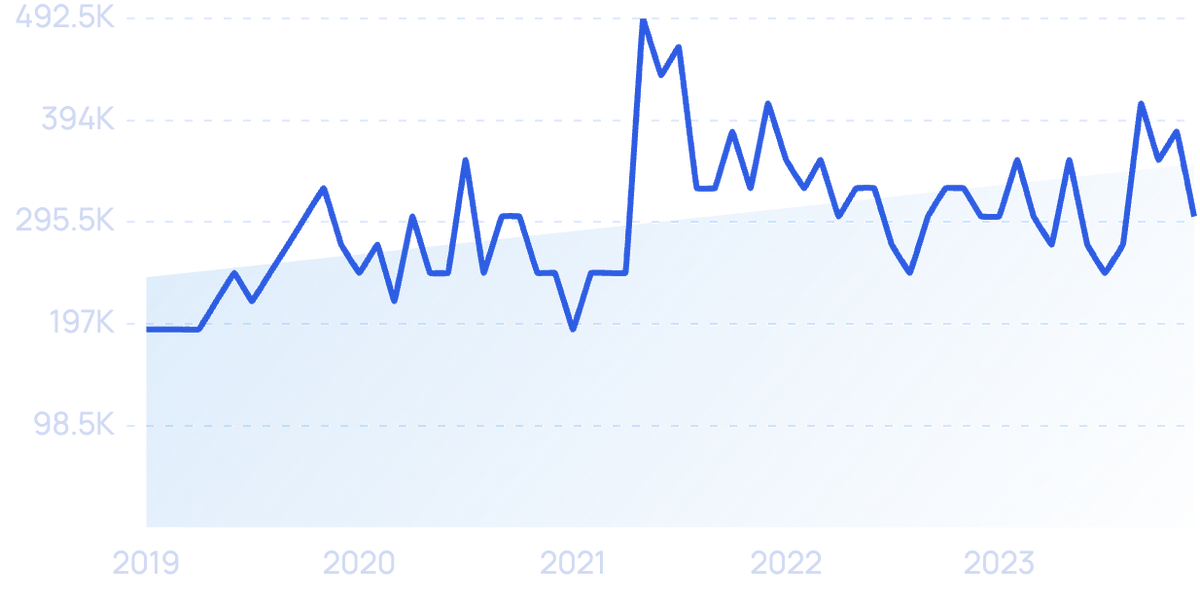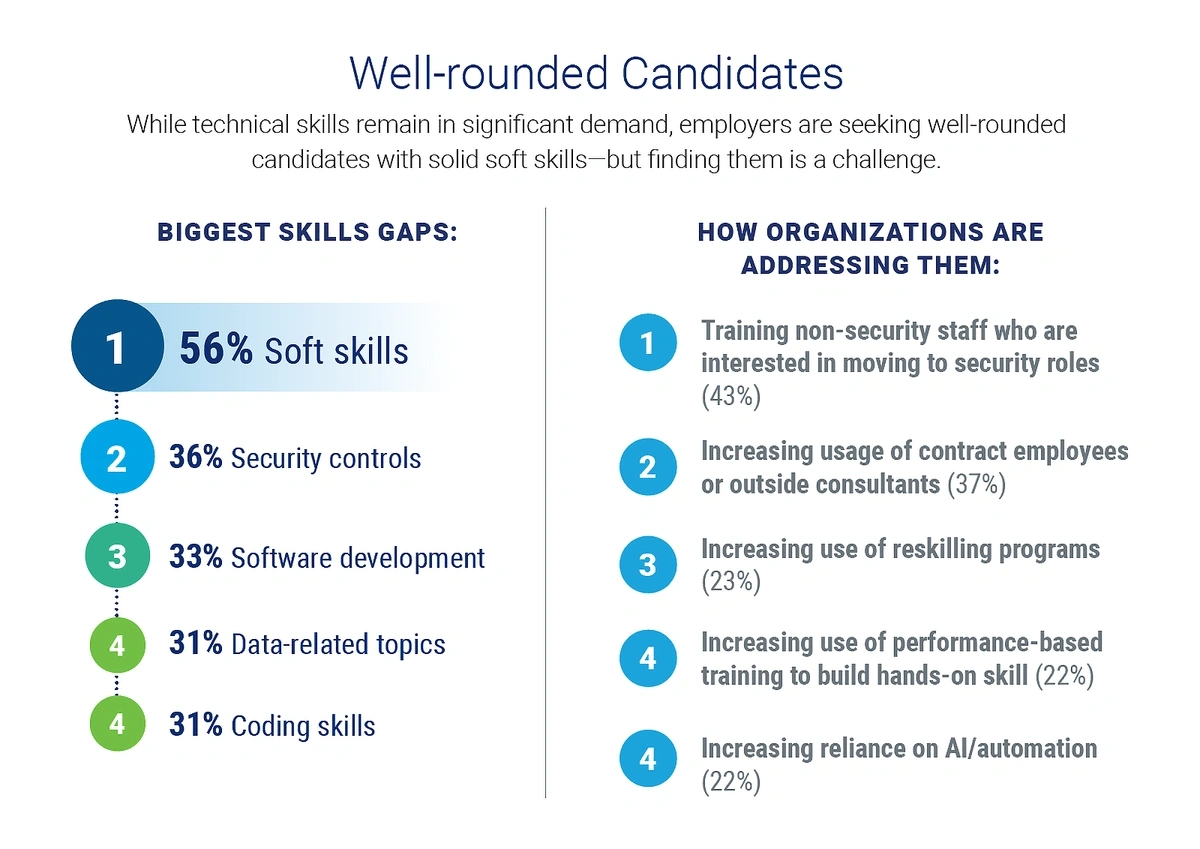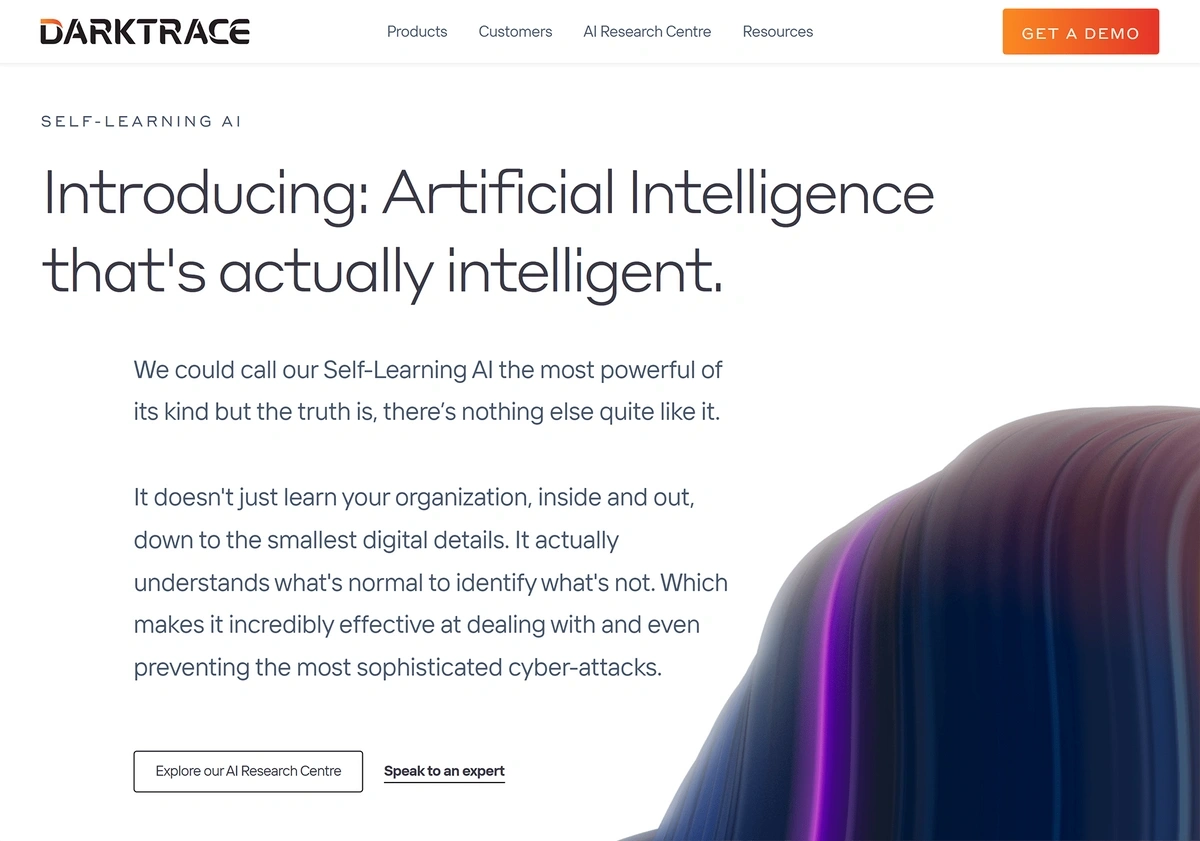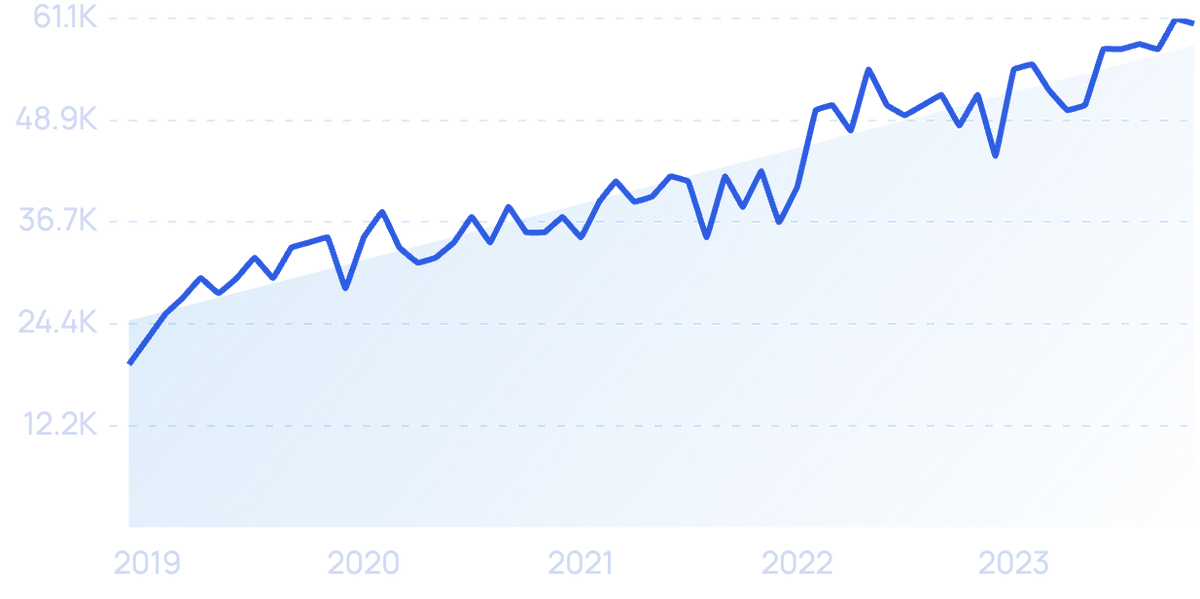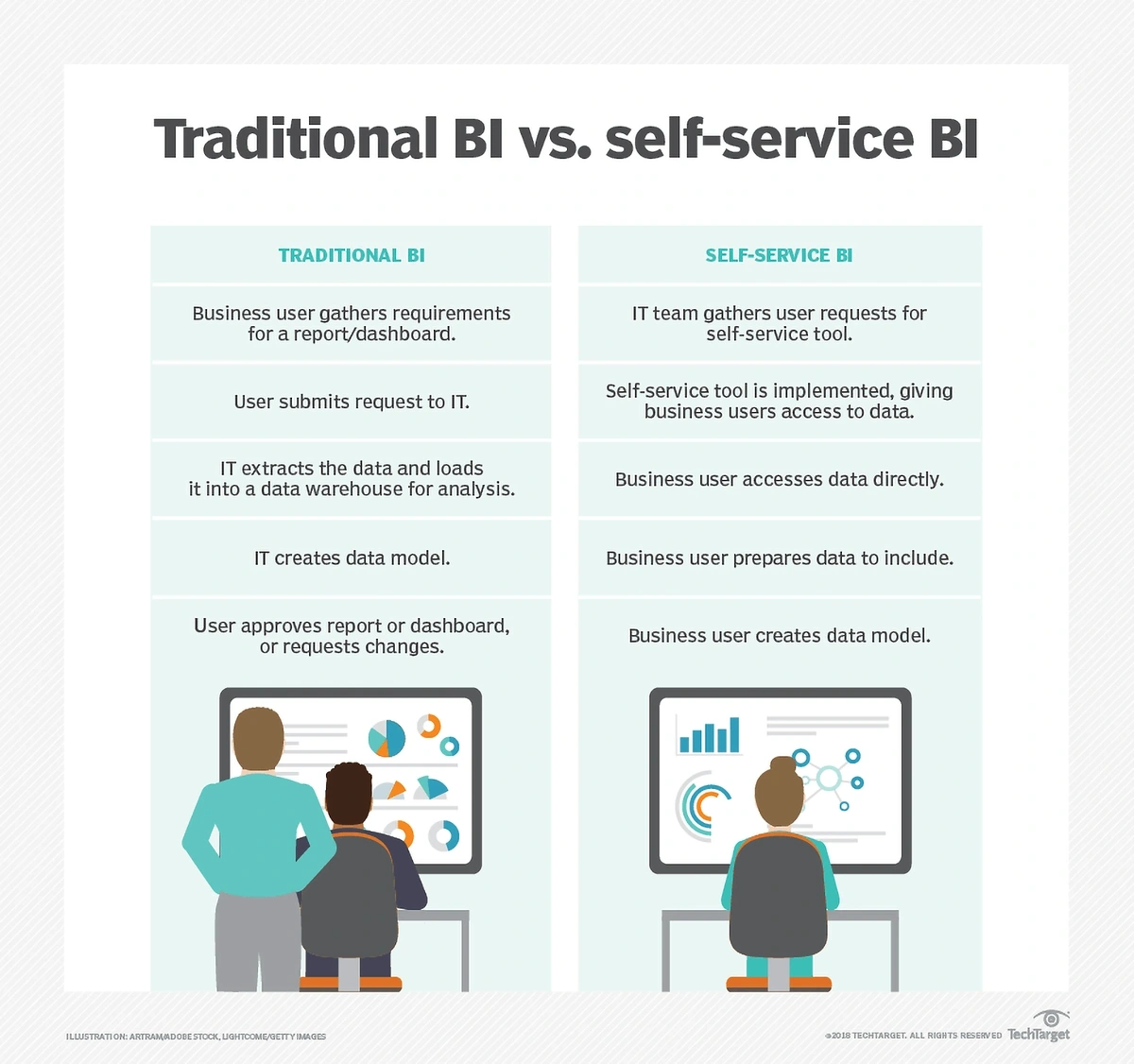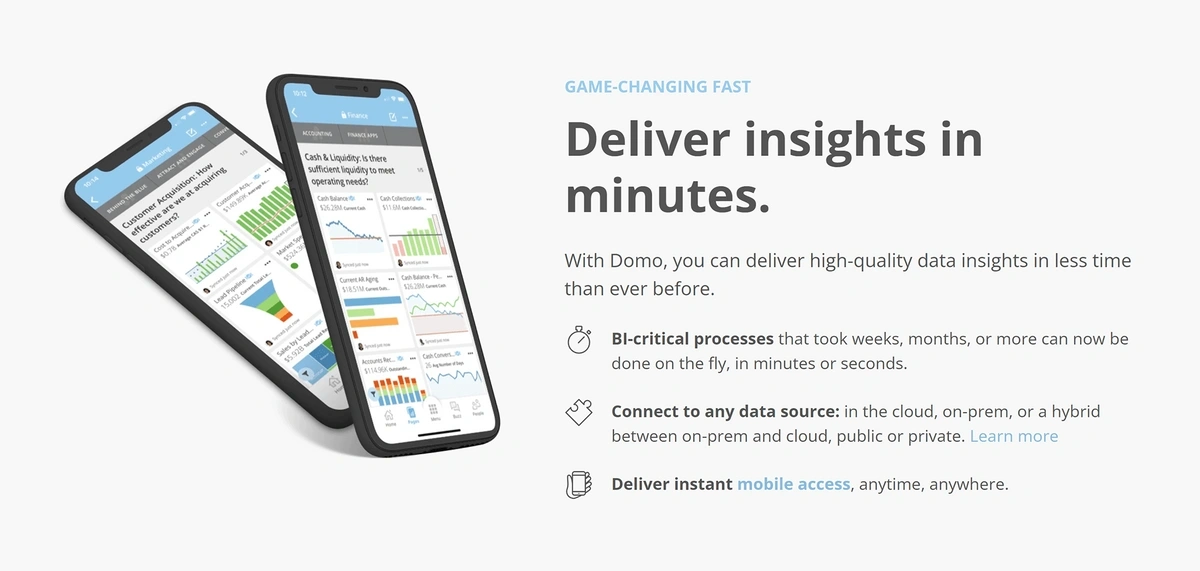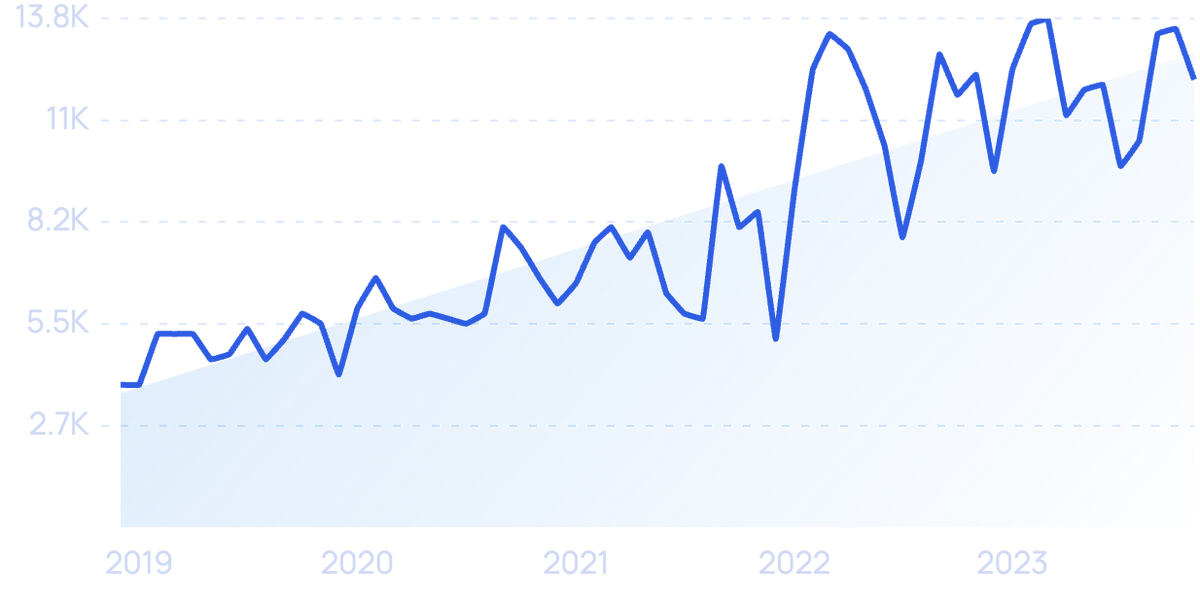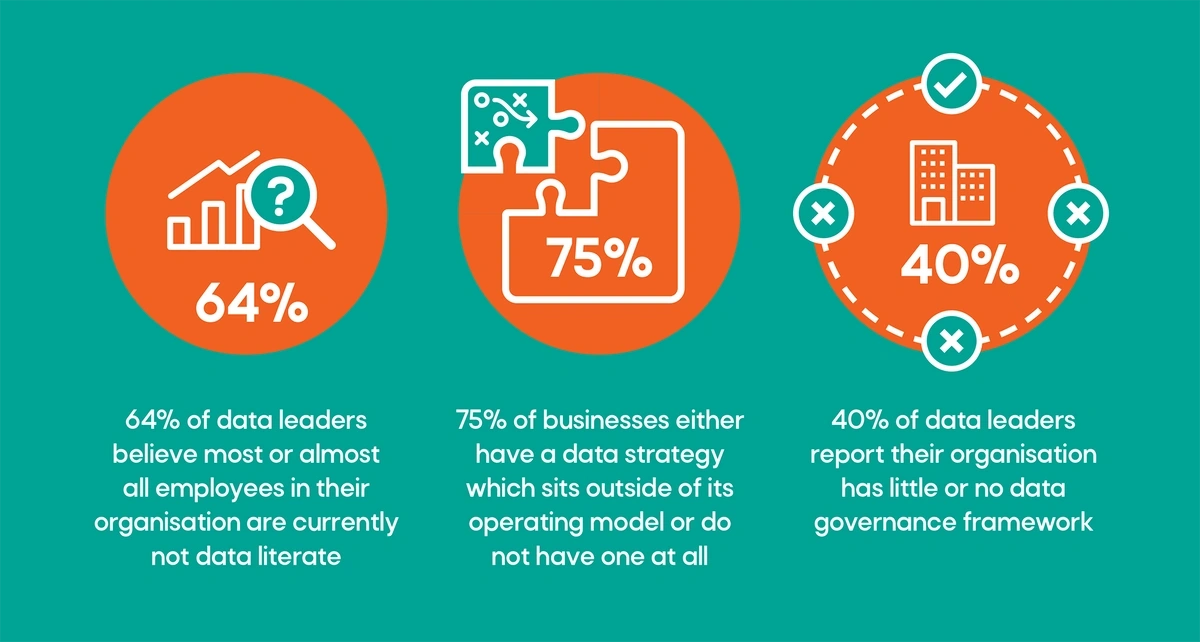
Top 5 Data Management Trends (2024 & 2025)
Today’s companies are collecting data at an unprecedented rate — 2.5 quintillion bytes of data are created every day.
However, many organizations today are struggling to handle this staggering amount of data. Enter the fast-growing field of data management.
Effective data management allows organizations to drive innovation, deliver real-time insights, and improve their bottom line.
Read this list of five trends to learn about the latest changes and newest solutions impacting data management.
1. Data Fabric Weaves Together Data Sources
Enterprises that are running a combination of old and new technologies alongside multiple clouds are finding a better way to optimize their data management: data fabric.
Search volume for “data fabric” jumped in late 2021.
Data fabric is an architecture concept that takes data from several sources—public cloud, private cloud, on premise, or IoT devices— and weaves it into one usable unit.
This single view of data is then accessed through a centralized platform.
Data fabrics contain several essential layers.
Data fabrics utilize machine learning to automate data classification, discovery, and governance.
This solution enables businesses to manage their data effectively without upending their current systems. Together, the systems are far more effective and can lead to faster data insights.
Businesses are using data fabric to eliminate data silos, increase scalability, and streamline data management.
As more and more businesses adopt data fabric, the market is accelerating.
Estimates predict the data fabric market to grow at a CAGR of 21% through 2030.
Financial services, healthcare, and retail organizations are the most likely to utilize data fabric architectures.
In one survey, more than half of IT leaders are investigating data fabric approaches or have already deployed this type of architecture.
Data fabrics are especially important for enterprises that pick up customer data from a variety of touchpoints.
For example, a company may get data from social media, its CRM platform, and other sources. With a data fabric, all of that data is unified in order to give employees a complete view of customer preferences and a foundation on which to build personalized services.
A data fabric enables users in a variety of business operations to easily access the data they need.
Data fabrics also have the potential to change data management in the healthcare sector.
In hospitals and research facilities, data is stored in various departments across various organizations. Patient files, medical imaging, clinical trials, published research, and genomics data are just a few examples.
In one example, a data fabric was able to improve healthcare users’ search accuracy by 97% and decrease manual data analysis time by 25%.
Data fabric has the potential to streamline the process of searching for patient data.
2. Flash Storage Set to Surpass Hard Disk Drives
Spinning hardware disks have been the norm for more than 50 years. However, many enterprises are poised to adopt solid-state flash memory (SSD) for data storage in the coming years.
All-flash storage arrays can now hold more data per rack than hard disk drives (HDD).
Plus, flash storage devices deliver 4x read/write speed when compared to hard disk drives.
This type of storage is also more efficient and less prone to failure than other options.
That means increased sustainability and higher energy savings for data centers.
All-flash arrays are currently more expensive than hard disk drives, but that trend is expected to be reversed by 2025.
According to IDC, enterprise spending on SSD surpassed spending on HDD for the first time in 2020.
IDC predicts enterprise spending on SSD storage will continue to increase in the coming years.
Because several tech advancements are on the horizon for SSD, spending may increase even more than expected.
Flash storage using penta-level cells (PLC), which offers 5 bits per cell, is currently in development.
PLC offers the highest states per cell and a modest increase in capacity.
Western Digital predicts this technology won’t be available until 2025 at the earliest.
PLC storage offers 25% more capacity than the QLC flash (4 bits per cell), which is also in development.
PLC offers 66% more capacity when compared to the technology available today, TLC-based SSDs (3 bits per cell).
QLC is just now hitting the market.
Another new storage protocol related to flash is nonvolatile memory express (NVMe).
Because it utilizes PCle buses, this technology promises ultra-high throughput and fast response times.
NVMe is able to transfer 25x more data than serial ATA.
PCle buses are an important component of NVMe.
Taken one step further, NVMe-oF (over fabric) makes the technology available over an entire data center network. It can improve speed and connectivity between data storage and servers.
3. The Growing Cost and Danger of Ransomware
Data security is one of the top concerns among IT leaders.
Search interest in “data security” is on the rise.
In a 2022 survey from Rubrik, 52% of organizations had experienced a data breach in the past year.
Rubrik’s survey found that more than half of organizations suffered a data breach in the past year.
Nearly half of leaders are concerned about data breaches and ransomware moving into the year ahead, according to Rubrik.
However, according to a survey from Rackspace Technology, only 43% of IT leaders are confident they can protect their organization’s data.
Ransomware attacks have become especially prevalent in recent months.
Search volume for “ransomware” shows a 57% increase over the past 5 years.
One report revealed an 80% increase in ransomware attacks from mid-2021 to mid-2022.
By 2030, cybercrime experts say ransomware will cost businesses $265 billion annually.
In addition to the prevalence and expense of these attacks, cybercriminals are becoming more advanced in their tactics.
Ransomware-as-a-service (RaaS) is a new business model for these hackers.
RaaS kits are available on the dark web for anyone to purchase, regardless of their programming experience. Various profit models include monthly subscriptions, one-time fees, or profit sharing.
Because this type of ransomware is human-operated, Microsoft likens RaaS to a gig economy.
Data shows more than 60% of all ransomware attacks in the past 18 months were RaaS.
With RaaS, a developer writes the code and an affiliate launches the attack.
The proliferation of RaaS is leading to a dramatic increase in the number of ransomware variants.
FortiGuard Labs identified 5,400 variants in the second half of 2021. That number was up to 10,666 in the first half of 2022.
4. Adopting AI/ML Solutions to Manage Data Risks
Guarding against ransomware and other attacks is quickly becoming a top priority of data management professionals.
But the demand for security specialists is far outpacing talent availability.
In 2021, the cybersecurity workforce dropped from 3.12 million to 2.72 million.
Estimates show that the workforce needs to grow 65% to adequately meet the needs of organizations.
Security controls are one of the largest skill gaps companies are noticing when looking for new hires.
Many are even resorting to training non-security staff to take over security roles.
A 2021 survey from ISACA found that there are several skill gaps in new employees hired for cybersecurity roles.
In addition, the workload of data security specialists is increasing.
One survey showed more than half of security specialists say their team is overwhelmed by the amount of alerts, and 55% say they aren’t confident in their team’s ability to respond to the alerts.
Artificial intelligence and machine learning tools are bridging this skills gap to protect data where it’s most vulnerable.
Search volume for “AI cybersecurity” is up nearly 1,329% in the past 5 years.
AI/ML systems can help prevent fraud, block malware, manage compliance, and detect system intrusions.
These solutions don’t remove the need for data security specialists, but they do make the load more manageable.
The market for AI-based data security was $14.9 billion in 2021, and it’s expected to reach $133.8 billion by 2030.
IBM’s Cost of a Data Breach report from 2022 shows that organizations with a fully deployed automated platform identified and contained attacks 74 days faster than those who didn’t have this kind of system.
The cost savings amounted to more than $3 million.
Deploying an artificial intelligence platform was the most impactful cost-saving strategy.
Enterprises are finding that AI/ML-based endpoint protection can analyze suspicious behavior better than signature-based technology.
One cybersecurity expert said ML-based security can stop up to 92% of endpoint threats. That’s compared to only 60% of threats being stropped by signature-based technology.
Even data backups are vulnerable.
In 2022, some ransomware attacks went to the backups first before hitting the production data.
This is why automated anomaly detection run by AI/ML technology is becoming a crucial part of any business’ data security strategy.
While this scanning is currently used for secondary storage, industry experts predict it will be used within primary storage in the next three years.
Darktrace offers one of the most popular AI-based cybersecurity platforms on the market today.
Search volume for “Darktrace” jumped in 2021.
The company protects more than 7,700 organizations in 110 countries.
Darktrace’s AI solution offers continuous visibility and protection through a Cyber AI Loop.
In mid-2022, Darktrace announced it expected full-year revenue to hit $417 million, an increase of nearly 50% year-over-year.
It was also named to the TIME100 Most Influential Companies list in 2021.
5. Expanding Data Access and Understanding
In the past, data has been strictly owned and tightly controlled by IT, but that’s no longer the case.
Various departments and employees need access to data in order to make real-time business decisions.
However, this creates a number of concerns for data managers.
Security and compliance are just two examples.
Those in data governance and consumption roles seek to create a framework for accountability and decision rights regarding data.
Search volume for “data governance” has been climbing in recent years.
Up to 7.5% of an organization’s IT budget is spent on data governance and up to 10% is spent on data consumption annually.
Managing, distributing, and accessing data costs enterprises millions of dollars each year.
Those companies that effectively share data are able to communicate business value and produce a bottom-line impact. That’s according to Gartner.
In 2023, many organizations are likely to outline a plan for data democratization, a plan to put the appropriate data and tools in the hands of the right employees.
Because most of these employees are non-technical, low-code no-code (LCNC) data apps and self-serve analytics/business intelligence solutions are key.
Self-serve business analytics allow users to access data without intervention from IT.
This enables users to easily access the data they need, accelerate understanding, and make faster decisions.
For example, Domo offers a low-code data app platform that integrates data across departments while maintaining security and governance.
Domo gives organizations the ability to share data across departments.
The company was top-ranked in Gartner’s Peer Insights Voice of the Customer survey in 2022.
Even though these apps and platforms enable employees to access data, many users are still data illiterate, meaning they don’t know how to extract value from the data they have.
Search volume for “data literacy” is up nearly 214% in the past 5 years.
One global survey reported that 64% of organizations say their employees lack data literacy.
The survey showed data governance and data literacy issues are prevalent in companies around the world.
Even business leaders in the C suite aren’t confident in their ability to work with data.
A report from Qlik showed only 32% of senior leaders are data literate.
Educating users will likely be a focus point for enterprises in the next few years.
According to Forrester, 75% of US business leaders are planning to adopt a company-wide data literacy program.
Conclusion
That wraps up our list of the top five trends in data management over the next 3 years.
Data management is becoming more important than ever. AI/ML solutions are giving businesses the opportunity to do more with the data they have while keeping it safe. But challenges abound.
Proper storage and ownership is a crucial point. Data fabric, together with self-serve analytics, is changing the way business users access data. Organizations that can develop data literacy and solutions to safeguard the data are poised to see the best results.
Stop Guessing, Start Growing 🚀
Use real-time topic data to create content that resonates and brings results.
Exploding Topics is owned by Semrush. Our mission is to provide accurate data and expert insights on emerging trends. Unless otherwise noted, this page’s content was written by either an employee or a paid contractor of Semrush Inc.
Share
Newsletter Signup
By clicking “Subscribe” you agree to Semrush Privacy Policy and consent to Semrush using your contact data for newsletter purposes
Written By


Josh is the Co-Founder and CTO of Exploding Topics. Josh has led Exploding Topics product development from the first line of co... Read more



